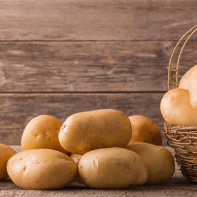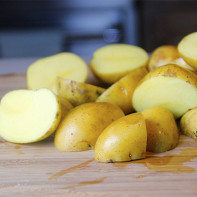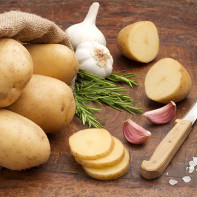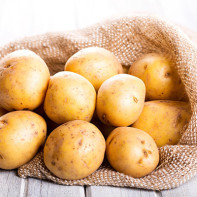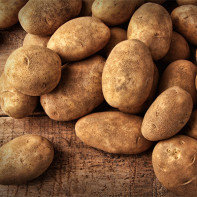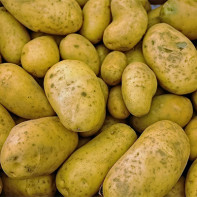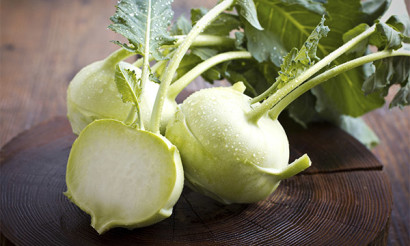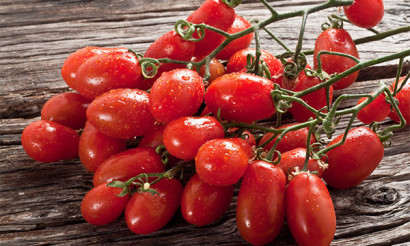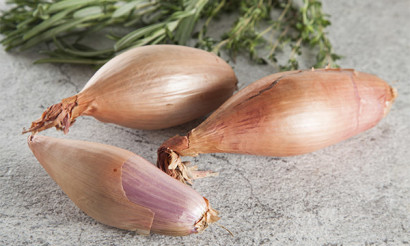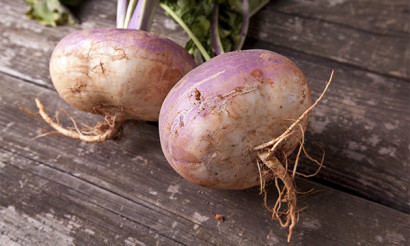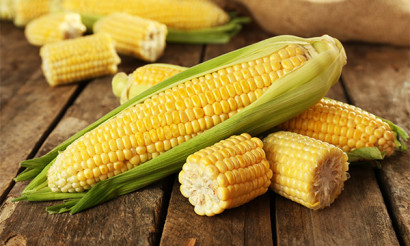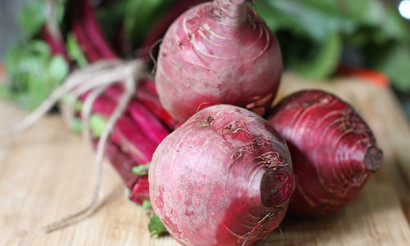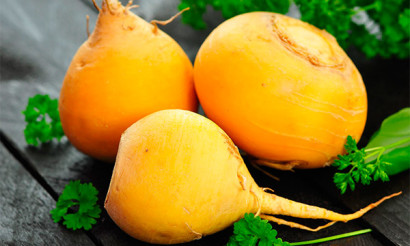Potatoes: useful properties and recipes
Potatoes are one of the most common products. It is used for the preparation of first, second dishes and salads, and its useful properties are known to everyone.
- History of the origin of the potato
- Types
- What is the difference between yams and potatoes
- Composition and calories
- Useful properties of yams
- General benefits
- For Women
- For Men
- In Pregnancy
- Breastfeeding
- For children
- Benefits and harms of potato peels
- Therapeutic Properties of Potato Sprouts
- Benefits of Potato Juice
- Can I Eat Potatoes to Lose Weight
- Potatoes in Medicine
- Diabetes Mellitus
- Pancreatitis
- Gastritis
- For the Intestines
- For constipation
- For colitis
- For gout
- For hemorrhoids
- Pri cholecystitis
- Recipes of folk medicine based on potatoes
- Potato juice
- Compresses
- Potato inhalations
- Decoctions
- Tinctures
- Potatoes in cosmetology
- For Face
- For Hair
- Harm and Contraindications
- How to choose and store potatoes
- Can I Freeze?
- Rules of Potato Consumption
- How much can I eat per day?
- Can I Eat Potatoes Raw?
- Can I Eat Overnight?
- Can one eat sprouted potatoes?
- Can one eat potatoes during Lent?
- How to cook potatoes: Recipes
- How to fry them
- How to Boil
- Baked potatoes in the oven
- Potato Draniki
- How to make chips out of potatoes
- Can we give potatoes to animals?
- Interesting facts about potatoes
History of the origins of the potato
The potato is native to South America. It was part of the diet of the Indians of what is now Peru and Bolivia, and only became known in 1565. The existence of this unique root vegetable became known thanks to the Spanish sailors who went to South America in search of gold. However, the travelers were unsuccessful in finding gold reserves. Instead the Spaniards made a grandiose discovery and gave the potato to the world.
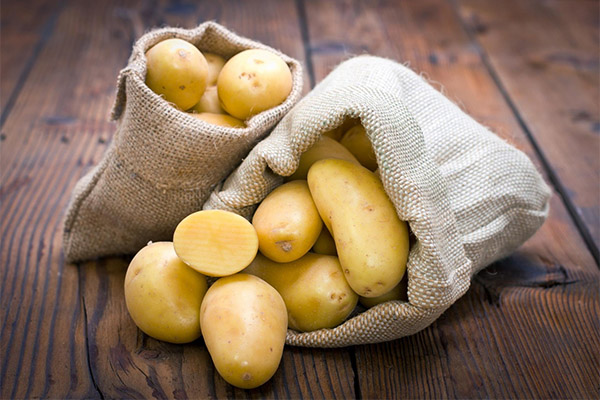
In 1588, it entered into the life of the Irish and soon became not only the most popular product among the local population, but also formed the basis of their diet for 300 years. Even today, the Irish can't imagine their lives without the potato. Every modern Irishman consumes 4 kg of the product a day.
The spread of the potato to the rest of the world only began in the early 17th century. This unique root vegetable came from Spain:
- Italy;
- Austria;
- Belgium;
- Holland;
- France;
- England.
The potato came to the territory of Russia during the time of Peter the Great, and its spread was hindered by some difficulties. Peasants refused to give their land for growing this root crop and staged whole "potato riots", which began in 1834 and lasted until 1844. Not only Russians, but also Tatars, Komi, Udmurts and even Chuvashs revolted against the spread of the potato. The common people did not want to grow this plant on their lands. They destroyed crops, re-elected headmen, and beat up officials. Many rioters were shot, some were exiled to Siberia, or sent into service.
Despite all the difficulties associated with the spread of the potato on the territory of modern Russia, the local population was forced to recognize this root crop as a food product. Already in the second half of the 19th century there were more than 200 varieties that could grow in all climatic regions of Russia.
Varieties
Today there are more than 3,000 varieties of potatoes, which are divided into the following varieties:
- Table potatoes. This type is used for preparing a variety of dishes. Tubers have excellent taste characteristics, contain no more than 20% of starch, a large amount of vitamin C, beta-carotene and other trace elements that have a beneficial effect on the human body.
- Technical potatoes. This variety is not used in food. Technical potatoes are used to make starch and alcohol. It contains up to 16% starch and a large amount of protein.
- Fodder potatoes. It is used to make pet food. These feeds promote rapid growth of livestock due to their high starch and protein content.
- Universal potatoes. They are used both for food and industrial purposes. Such potatoes contain 16-18% starch, a lot of vitamins, macro- and microelements.
What's the difference between yams and potatoes
The yam and the potato are similar to each other only in some characteristics. The two plants belong to different families and differ from each other in such parameters:
- Chemical composition. A 100 g of regular potatoes contains 2.02 g of protein, 0.09 g of fat, 17.79 g of carbohydrates, a variety of vitamins and minerals. Batat contains less protein, less fat, but more carbohydrates, beta-carotene, and vitamin A.
- Flavor characteristics. Potatoes are characterized by a loose texture and a salty taste. The yam, on the other hand, is radically different in taste from the potato. It can be slightly sweet or have a rich, sweet taste somewhat reminiscent of banana or melon.
- Growing Features. Many potato varieties are excellent for growing in risky farming regions, but require regular care. Batat can only grow in hot tropical conditions. In tropical hot regions the plant does not need any special care and gives a big yield without much time and effort.
- Applications. Potatoes are a universal food and can be used to prepare a variety of side dishes, soups and salads. The same cannot be said about the yam. This vegetable has a sweet taste and is used to prepare only some dishes.
- Appearance. The fruit of the potato has a rounded shape, and the skin can be colored in a brown, red or pink shade. The yam reaches a large size and has an elongated shape. Its tubers can only be colored in two colors - red and orange.
Composition and calories
Potatoes contain a huge amount of nutrients in their composition. Per 100 g of this unique food product is:
- 0.08 mg thiamine.
- 0.03 mg of riboflavin.
- 1.1 mg of niacin.
- 0.24 mg pyridoxine.
- 16.5 µg folacin.
- 11 mg ascorbic acid.
- 2.1 µg vitamin K.
- 11 mg calcium.
- 0.7 mg of iron.
- 22 mg magnesium.
- 59 mg of phosphorus.
- 426 mg of potassium.
- 6 mg sodium.
- 13 mg choline.
- 0.4 mcg selenium.
In 100 grams of fresh potatoes there are 73 calories.
Useful properties of potatoes
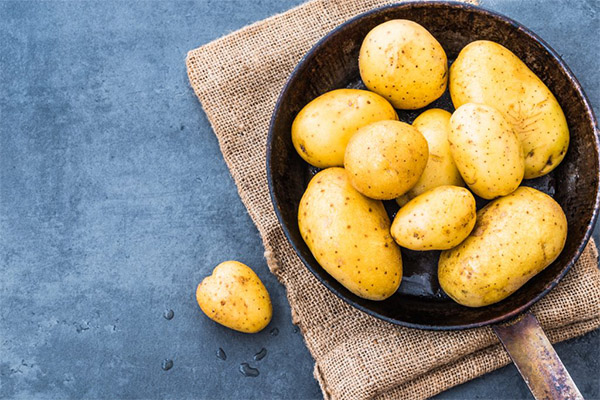
General benefits
The unique composition of potatoes has beneficial effects on all the functions of the human body and internal organs. Regular consumption of this root vegetable helps:
- remove accumulation of salts and excess fluid from the body;
- improve metabolism;
- prevent the development of many diseases (hypertension, atherosclerosis, etc.)
- cope with the acute symptoms of gastritis;
- reduce the content of acid in the stomach;
- to cope with ulcer diseases;
- saturate the body with vitamins that are necessary for normal functioning of internal organs;
- cope with the acute symptoms of gout;
- strengthen bone tissues;
- Prevent premature aging of the skin;
- to improve fat metabolism;
- To increase the level of hemoglobin in the blood;
- improve hematopoiesis;
- Reduce harmful cholesterol levels.
For women
Potatoes are an indispensable product for women's health. Due to the large amount of vitamins, calcium, magnesium and other nutrients, its regular consumption will help to maintain female beauty, improve the condition of hair and nails, cope with the stresses that are waiting for modern women at every step, and even prevent the development of many diseases.
Potatoes can have a beneficial effect on the female body not only internally, but also externally, as its derivatives are included in many cosmetics for skin care.
For men
According to doctors, the daily diet of an adult man can not do without potatoes. He will help keep active throughout the day, saturate the body with useful substances and prevent the development of chronic fatigue.
Pregnancy
During pregnancy, a woman should carefully monitor her daily diet, adding to it vitaminized products. These include potatoes. It contains folic acid, potassium and other beneficial substances that can have a beneficial effect on the overall condition of the pregnant woman and the fetus.
Regular consumption of potatoes will help:
- saturate the body of the pregnant woman and child with the necessary vitamins, macro-and micronutrients;
- Ensure the proper formation of all internal organs and systems of the child;
- Relieve heartburn attacks;
- Reduce or even completely eliminate edema;
- remove excess fluid from the body;
- Increase the level of hemoglobin in the blood;
- prevent the development of cardiovascular diseases.
When breastfeeding
Potatoes are on the list of foods that are allowed to eat during breastfeeding. Its components will have a beneficial effect both on the woman and on the newborn baby. Regular use of this product will help maintain hydrosaline balance, prevent the development of disorders of the nervous and cardiovascular systems.
For children
Pediatricians allow the introduction of potatoes into the daily diet of children who have reached six months of age. This root vegetable is hypoallergenic, nutritious product and will help to saturate the child's body with many vitamins, macro- and micronutrients, which are necessary for the proper development of the baby.
The benefits and harms of potato peels
Contrary to popular belief, potato peels are not just a waste product. Proper use of this product contributes to the recovery of the whole body and will help to cure some diseases.

Potato peels, like the root vegetable itself, have a rich composition and include many beneficial substances, including:
- ascorbic acid;
- potassium;
- manganese;
- niacin;
- calcium;
- riboflavin;
- zinc;
- thiamine;
- iron.
Due to the unique effects of these beneficial substances, potato peels and their derivatives have a beneficial effect on the human body and help
- normalize digestion;
- remove accumulated toxins and impurities;
- cope with frequent constipation and flatulence;
- reduce the risk of cancer in the gastrointestinal tract;
- prevent the occurrence of liver damage;
- lower blood pressure;
- prevent the development of cardiovascular disease;
- stop premature aging of the skin and the whole body;
- remove kidney stones;
- reduce blood sugar levels.
However, doctors also advise to pay attention to the fact that potato peels contain solanine. This substance is a toxin and if improper or excessive consumption of potato peels can provoke the development of serious neurological and gastrointestinal diseases.
Therapeutic properties of potato sprouts
Not only potato peels, but also its sprouts are used for treatment. They have antibacterial, antiviral and antimicrobial properties and have a positive effect on blood vessels, strengthening their walls. In addition, infusions and other therapeutic compositions based on potato sprouts can accelerate the healing of small wounds and cuts, relieve inflammation and pain.
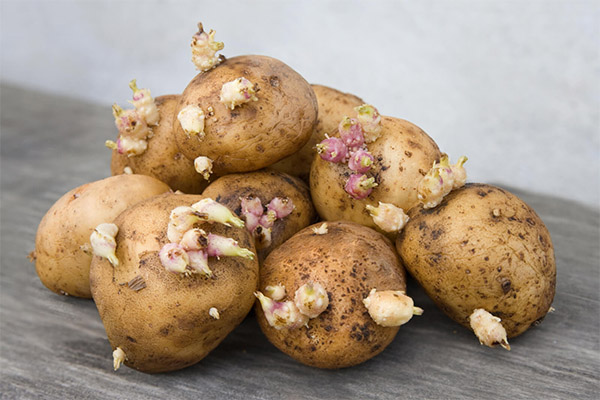
Potato sprouts are used to treat many diseases. Decoctions and infusions, in which they are included, perfectly cope with such pathologies:
- A variety of skin diseases. Infusions of potato sprouts will help cure eczema, fungal diseases and even dermatitis.
- Inflammatory processes that occur in the respiratory tract. Tinctures of potato sprouts help cure colds, sore throat and bronchitis.
- Inflammatory processes occurring on the mucous membrane of the mouth. This remedy is effective in the development of stomatitis and gingivitis.
- Diseases of the bones and joints. Tinctures of potato sprouts help to fight diseases such as arthritis and gout.
Medics draw the attention of patients to the fact that it is recommended to refuse treatment with potato sprouts:
- Women who are carrying or breastfeeding a child;
- Children who have not reached the age of twelve years;
- People who have been diagnosed with diabetes mellitus.
The Benefits of Potato Juice
The use of potato juice as a remedy is endorsed not only by experts in folk medicine, but also by certified therapists. According to medics, this remedy has many unique properties, including:
- diuretic;
- laxative;
- antimicrobial;
- regenerative;
- analgesic;
- antispasmodic;
- wound healing;
- anti-inflammatory.
Systematic use of freshly prepared potato juice will help improve metabolism, balance the water-salt balance, increase hemoglobin and even eliminate disorders of the cardiovascular system and kidneys. In addition, according to many therapists, this natural remedy is able to lower blood pressure, improve the functioning of the gastrointestinal tract, increase appetite, relieve pain syndrome localized in the stomach, intestines or head.
Is it possible to eat potatoes while losing weight
According to experienced nutritionists, potatoes can be included in the diet menu. This vegetable will not only saturate the body with valuable nutrients, but also help to cleanse the organs of the gastrointestinal tract from decay products, improve metabolism and promote weight loss, but only if it is consumed correctly.
Including potatoes in a diet menu, it is important to understand what to eat this root vegetable with. The ideal combination is potatoes baked with low-fat fish or vegetables, without adding sauces, lots of spices and salt. Such a dish will not only be healthy, but also delicious.
Adhering to a diet whose goal is to lose weight, you need to eat baked potatoes no more than three times a week.
Potatoes in medicine
Tubers, peels, flowers of potatoes and their derivatives are widely used to treat many diseases. The unique properties of this root crop help to cope with many pathological processes that occur in the human body, and the content of a large number of vitamins and other useful substances will help the patient to restore strength and return to a normal rhythm of life.
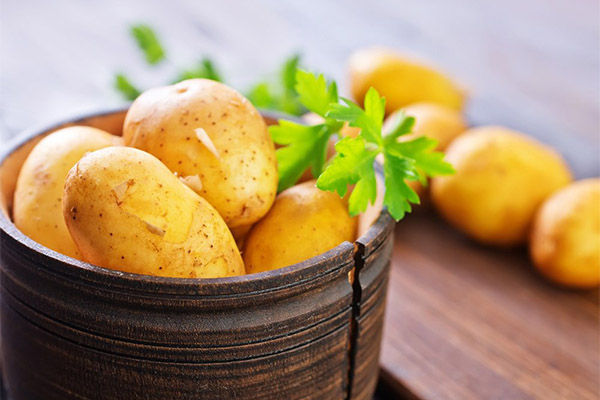
For diabetes
Based on the latest research from the American Diabetes Association, it is safe to say that starch-containing foods should be part of every diabetic's daily diet. This will help to balance the daily diet and diversify the menu.
Therapists recommend patients who suffer from diabetes to use only boiled potatoes. At the same time, the volume of each serving should be small.
Important: The glycemic index of raw potatoes - 50-60 units, boiled - 65-70, baked - 60, mashed potatoes - 85-90, fried - 110 units, potato chips - 95 or more.
In pancreatitis.
Potatoes have many valuable virtues:
- It has a sufficient content of highly digestible proteins.
- It contains a large amount of potassium, which removes fluid from the body and thus helps to reduce pancreatic edema.
- Does not traumatize the mucous membranes of the gastrointestinal tract.
- Contains a minimal amount of fat in its composition.
Based on all the above facts, gastroenterologists allow to include potatoes in the daily menu of a patient suffering from acute pancreatitis. It is consumed in the form of mashed or steamed pudding.
Potatoes are also allowed to eat in chronic pancreatitis. In this case, the daily rate of consumption of the root vegetable is from 200 to 300 grams.
Gastritis
Gastroenterologists do not prohibit their patients to consume boiled potatoes even in the acute form of gastritis. Regular consumption of potatoes helps to improve the function of the gastrointestinal tract and relieve unpleasant symptoms that occur with this disease.
Experts of folk medicine advise people suffering from gastritis to drink freshly prepared potato juice daily. This remedy has anti-inflammatory, wound healing properties and helps to cope with the treatment of acute and chronic gastritis. In this case, many gastroenterologists approve this remedy and recommend their patients to take it in conjunction with medications.
For the intestines
This unique root vegetable is indispensable for normal intestinal function. He is easily digested by the stomach and stimulates intestinal peristalsis, preventing stagnant feces.
However, physicians say that the benefits of eating potatoes can be noticed if you do not overdo it with too much. Excessive use of the root vegetable will harm the whole body and lead to irregularities in the gastrointestinal tract, including the intestines.
When constipation
Potatoes will help to cope with the problem of frequent constipation. It contains many useful substances that have a positive effect on the gastrointestinal tract, prevent stagnant stools and have a mild laxative effect.
Studies have shown that effectively combats this problem is freshly prepared potato juice. Patients suffering from gastrointestinal diseases and, as a consequence, from constipation, note an improvement after the first reception of this unique means, and complete freedom from the problem after a course of treatment with potato juice.
However, physicians strongly advise against self-medication. The appropriateness of using this remedy can only be confirmed by a qualified specialist. Therefore, it is necessary to consult with your doctor before starting therapy.
In colitis
Potatoes are included in the list of allowed products in this disease. However, it should be cooked with a minimum amount of salt.
With gout.
Medics allow patients suffering from gout to eat potatoes in any form. Dishes, in which it is included, will not only please with excellent taste qualities, but also saturate the body with trace elements that have a beneficial effect on bone tissues and joints.
Helps in hemorrhoids.
Indispensable this product and in the treatment of hemorrhoids. It contains a large amount of:
- fiber;
- pectin substances;
- Nitrogenous components;
- starch.
These components have a coating and wound-healing properties. They will help to heal the microcracks that can form during the development of this disease and stop bleeding.
In cholecystitis
The antispasmodic, enveloping and other healing properties of the potato make it an indispensable product in the treatment of cholelithiasis. Patients suffering from this disease note that the regular use of the root vegetable reduces the symptoms characteristic of cholecystitis, and improves the overall condition of the body.
Recipes of folk medicine based on potatoes
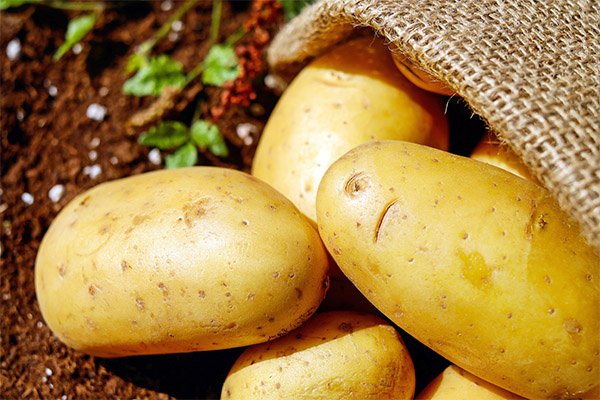
Potatoes are widely used in folk medicine and used to treat many diseases. The experts say that the use of compositions, the basis of which is a potato or its derivatives, will help to cope:
- With colds at any stage of their development;
- ulcers;
- diseases of the heart and blood vessels;
- acute allergic reactions;
- cancer;
- acute or chronic gastritis;
- heartburn;
- Diabetes mellitus.
There are many healing recipes that are based on potatoes and their derivatives, but the following are considered the most popular and effective.
Potato juice
Potato juice contributes to the complete cleansing of the body from the accumulated toxins and toxins in it.
To prepare a cleansing agent, you will need:
- potatoes;
- carrots.
An equal amount of juice should be squeezed from quality, peeled vegetables and mixed. Use the resulting mixture every morning for half an hour before meals for 10 days.
Potato juice will also help in the treatment of heart disease. To normalize the cardiovascular system, 100 ml of pure potato juice should be drunk for 21 days (3 times a day).
Compresses
Potato compresses are used to treat colds. They help to reduce swelling of the upper respiratory tract, have excellent warming and expectorant properties.
To prepare a potato compress, you will need several pieces of boiled root vegetables. They should be mashed to a mushy state, place the resulting mass in a piece of thin, natural fabric and place it on the bronchial areas. Keep the compress for 1 hour. Do so until a complete recovery.
Medics draw the attention of patients to the fact that the treatment of cough with potato compresses should be abandoned if the patient has increased body temperature. In addition, compresses are forbidden to put on children who have not reached the age of four.
Compresses of crushed raw potatoes will help to cope with pain localized in the joints.
To prepare a pain reliever, you will need:
- 300 g potatoes;
- 300 g of horseradish.
You need to grind the ingredients with a grater, mix them, apply to the joints and cover tightly with cellophane. Leave such a compress overnight. In the morning, the pain will be much less or completely gone.
Potato inhalation
Inhalations are used to treat acute respiratory diseases. To remove the unpleasant symptoms of colds, you need to boil a few tubers of potatoes and breathe their steam for no more than 10 minutes, covered with a thick towel.
Decoctions
Treatment with potato decoctions helps to cope with diseases of the cardiovascular system and remove excess fluid from the body.
To prepare this remedy, you need to boil several pure potatoes in a small amount of purified water. Take out the tubers, cool the decoction and consume it 3 times a week by the glass.
Tinctures .
This folk remedy has a beneficial effect on the entire body and helps to cope with fungal diseases.
To prepare a potato tincture, you will need:
- 10 g of potato flowers;
- 1 cup boiling water.
Preparation method
Place potato flowers in a thermos. Add to them the specified amount of liquid. Allow to infuse for 4 hours.
Tincture should be taken when refrigerated. Store in the refrigerator for no more than 2 days.
Therapists advise caution with folk recipes and strongly recommend against self-medication. Before beginning such therapy is recommended to consult with your doctor. Only a qualified specialist will be able to assess the appropriateness of treatment, taking into account all the features of the disease, the speed of its development and the presence of concomitant pathologies.
Potatoes in cosmetology
Potatoes are widely used in cosmetology and help maintain the beauty and youthfulness of the skin. In addition, home cosmetics, which includes this root crop, will help improve the condition of the hair, returning them to their lost shine and beauty.
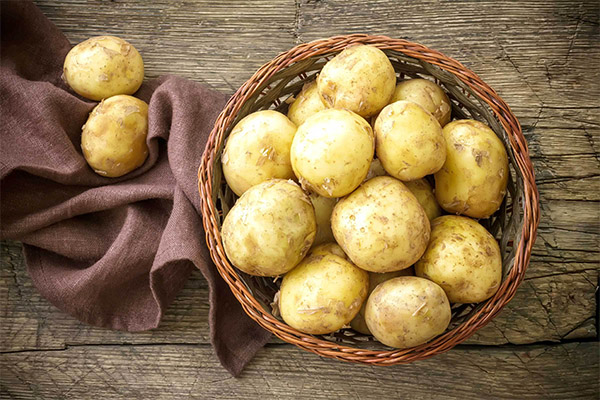
For the face
Potato masks have a beneficial effect on the facial skin. They saturate the skin with a lot of nutrients, perfectly moisturize, whiten, have rejuvenating, anti-inflammatory properties and have no contraindications.
There are many effective home remedies that include potatoes, but the most popular are considered the following.
Cleansing potato mask
To prepare this unique cosmetic will need:
- 10 g of mashed potatoes;
- a little bit of honey;
- One egg yolk;
- Oil of olive or sunflower.
Mix all the ingredients in the specified amount, apply the resulting mass on the skin and keep for no more than 10 minutes. At the end of the specified time mask should be washed with water at a comfortable temperature and apply a nourishing cream.
The mask will help to clean pores from impurities and prevent the formation of pimples.
Mask for acne and pimples
To prepare this potato mask you need to prepare 1 raw potato and a knife.
Cut the peeled tuber into thin circles, place it on the problem areas of the skin, take a comfortable position and keep the mask for 20-30 minutes. At the end of the specified time the potato should be removed from the skin. At the same time, do not wash or wipe your face.
Anti-inflammatory potato mask
To prepare this remedy, you need the following components:
- fresh carrots;
- raw potatoes;
- purified boiled water;
- 10 g of flour.
Grind the vegetables to a state of puree, take 10 g each and mix with the rest of the ingredients. The resulting mixture should be applied to the skin of the face, keep for 15-20 minutes, then rinse with clean, running water.
Rejuvenating potato mask
To prepare a rejuvenating remedy from potatoes, you will need only 3 ingredients:
- milk;
- potato;
- Carrot juice.
Mix 10 g of mashed potato prepared with cow's milk and 20 g of juice, apply to the face and leave for 15 minutes. Remove the mask with a sponge and wash with clean water without using soap or other cleansers.
Important: Cosmetologists recommend a test for allergic reactions before applying home cosmetics. You need to apply any of the above cosmetics to the inner side of the elbow bend, hold for 5-10 minutes and wash off. If a rash or redness appeared on the site of application of the mask, it is necessary to refuse to use the product.
For your hair
Several effective recipes based on potatoes will help to maintain the beauty of hair for many years.
Mask for normal hair
To improve the condition of normal hair and protect it from the effects of the external environment will help a mask prepared from the following components:
- 2 yolks;
- 2 tubers of potatoes;
- 5 g honey;
- 5 g vegetable oil.
Crush the potatoes and mix with the rest of the components. The resulting mass is applied to dry, dirty hair, hold for 30-40 minutes, then rinse the mask with plenty of water at room temperature and wash your hair with your usual shampoo.
Remedy for oily hair
To prepare this potato mask, you need the following ingredients:
- 70 ml of potato juice;
- 200 ml of skimmed kefir.
Mix the ingredients, distribute the resulting mixture over the entire length of the hair, wrap the head with a warm terry towel and hold for 30-40 minutes. Wash off the mask with your usual shampoo.
Honey and potatoes mask for dry and brittle hair.
To prepare the mask you need:
- the juice of 3 potatoes;
- The yolk of one egg;
- 2 big spoons of honey.
Place all the ingredients in a small bowl and mix thoroughly. The resulting mass is applied to clean, dry hair and leave for 25-30 minutes. Rinse with warm running water without shampoo.
Harm and contraindications
Potatoes have a huge number of useful properties and have a beneficial effect on the human body, but only if they are consumed in moderation. Excessive consumption of this root vegetable will lead to weight gain.
In addition, physicians do not recommend consuming potatoes, the skin of which has acquired a green hue. This indicates that the vegetable has increased levels of solanine. This toxin can have a negative impact on the human body and provoke the development of dangerous diseases.
Medics advise to refrain from consuming this product and its derivatives to those people who suffer from:
- from a variety of venereal diseases;
- urolithiasis;
- enterocolitis;
- enteritis;
- flatulence;
- obesity.
How to choose and store potatoes
Only products of high quality have useful properties. This also applies to potatoes. To buy quality potatoes, you need to pay attention to the following characteristics:
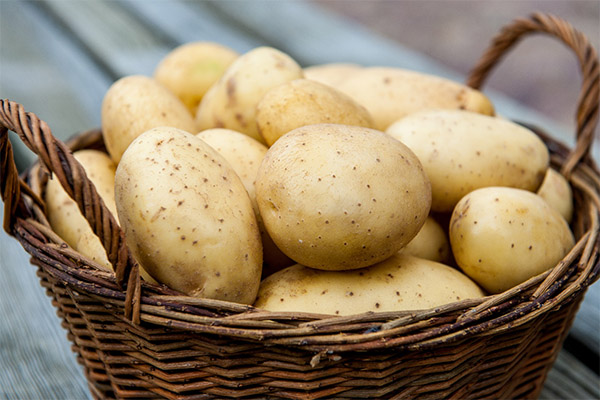
- Appearance. Quality tubers will have an attractive appearance. They should not have pieces of earth, grass or clay remaining on them.
- Size. It is better to choose potatoes of medium size. Such tubers contain a minimum amount of harmful components.
- Structure. Potatoes should have a dense structure. Soft, flaccid tubers are of poor quality, and their use will not bring any benefits.
- Presence of sprouts. It is better to refuse to buy sprouted potatoes.
- Smell. Quality tubers should not have an unpleasant smell. Its presence indicates that the vegetable is infected with pathogenic bacteria.
Experts recommend storing potatoes in a dark, dry, cool place. The ideal storage temperature for this root vegetable is considered to be 5 degrees Celsius.
Can they be frozen?
Freezing is a popular way to store potatoes. To preserve the root-crop in itself the maximum amount of nutrients, it is necessary to freeze it correctly:
- Rinse the tubers under running water at room temperature.
- Remove all the skin from it.
- Slice the potatoes in any convenient way.
- Pour cold water over the sliced vegetables and leave for 20 minutes.
- After the specified time, put the sliced potatoes into a container with boiling water and bring to a boil.
- Boil the vegetables for 2-3 minutes more.
- Drain all the liquid and dry the potatoes.
- Place the dried potato pieces in a bag, remove as much air as possible from it and put it in the freezer.
How to eat potatoes
Just like any other food, potatoes need to be eaten correctly. Excessive or improper consumption of this root vegetable will lead to the development of dangerous diseases that will require long and difficult treatment.
How much you can eat per day
Doctors recommend consuming no more than 250 g of boiled or oven-baked potatoes. The above amount of potatoes will help to saturate the body with vitamins, macro and microelements necessary for the normal functioning of all internal organs and systems.
Can you eat raw potatoes?
The raw potato contains a huge number of useful substances and is allowed to eat not only adults but also children. However, physicians note that the benefits for the body of raw potatoes will bring only if:
- There will be no sprouts on its surface.
- The skin of the vegetable is colored in a normal color and does not have a green hue.
- There are no signs of spoilage on the surface of the potato, including traces of rot or mold.
Can I Eat a Potato at Night
Experts say that potatoes are light and quickly digested. Therefore, it is possible to eat them before going to bed, but only in limited quantities. Excessive consumption of any product before going to bed will lead to a number of undesirable consequences.
Is it possible to eat sprouted potatoes
Doctors advise against eating potatoes, on which appeared more than 5-8 sprouts. In such a tuber, the content of solanine increases, which is a toxin and can harm human health. Potatoes that have become soft and covered with a large number of sprouts should not be eaten. It is better to throw away such tubers and do not risk your health.
Can I eat potatoes during Lent?
During Lent, it is forbidden to eat animal products. Potatoes do not include them, so you can eat them in any form without the use of animal fats during cooking.
How to cook potatoes: Recipes
Potatoes are widely used to make many dishes, so there are many recipes for every taste.
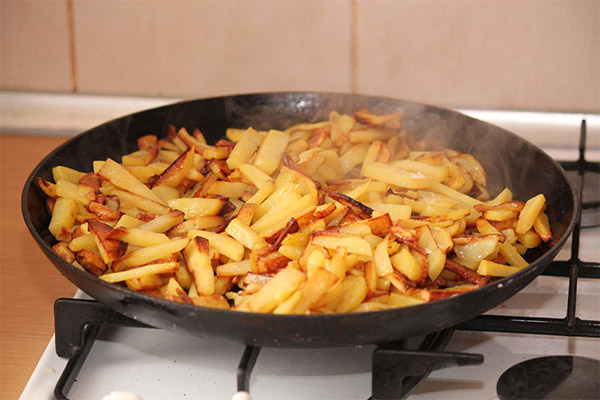
How to roast
It is difficult to find a person who is not familiar with the taste of fried potatoes. To prepare this popular dish will need:
- potatoes;
- sunflower oil;
- salt and spices.
Cooking steps:
- Wash the potatoes thoroughly under cool running water.
- Peel the vegetables from the skin.
- Slice the potatoes into thin slices.
- Put a frying pan on medium heat and pour sunflower oil into it.
- Pour the sliced potatoes into the pan, add salt and spices to taste.
Ready potatoes will become soft and fragrant. Serve the finished dish warm, with a salad and meat.
How to boil
Steps for cooking boiled potatoes:
- Wash the potatoes in clean water.
- Peel each tuber from the skin.
- Cut the potatoes into small cubes and place them in an enamel pot filled with clean, cold water.
- Put the pot over medium heat and bring to a boil.
- Remove the foam.
- Add salt.
- Cook the potatoes over medium heat.
- Drain the water.
- Serve hot with finely chopped dill and butter.
Baked Potatoes in the Oven
Baked potatoes have a unique taste and will not only help to diversify the daily menu, but also decorate the holiday table.
For cooking you will need:
- 1 kg of quality potatoes;
- 30 ml of vegetable oil;
- salt and spices to taste.
Cooking steps:
- Wash the potatoes under running water and remove all the skin.
- Cut it into slices of small size.
- Put sliced potatoes in a baking dish, add oil, salt and spices.
- Place the form in the oven preheated to 200 degrees Celsius.
- Bake the potatoes for 1 hour.
- Serve the dish hot with a salad of fresh vegetables.
Potato draniki
This dish will especially appeal to young children. To prepare it you will need:
- 1 kg of potatoes;
- 1.5 cups of flour;
- eggs;
- salt and spices.
Method of preparation:
- Grind peeled tubers on a fine grater.
- Add salt, spices and eggs to the resulting mass.
- Add flour to the dough.
- Form small tortillas in a pan and fry them on both sides.
- Serve the doughnuts warm with a little sour cream.
How to make potato chips
Potato chips are enjoyed not only by children, but also by adults. This dish will help to diversify the daily menu and will please the household with its taste features.
To prepare the chips you will need only 2 ingredients:
- high-quality potatoes;
- vegetable oil.
Cooking chips does not take too much time. The process consists of several steps:
- Peel the potatoes from the dirt and skin.
- Cut them into thin rings.
- Dry them by laying them on a piece of clean, natural cloth.
- Pour 100-150 ml of vegetable oil into a frying pan.
- Place the chips in the frying pan portion by portion.
- When the potatoes get a golden hue, take them out of the oil with a slotted spoon.
Can we give potatoes to pets?
Veterinarians allow introducing potatoes into the daily menu of pets. However, the amount of this product should be strictly limited. Otherwise, there is a risk of gastrointestinal disorders and other undesirable consequences.
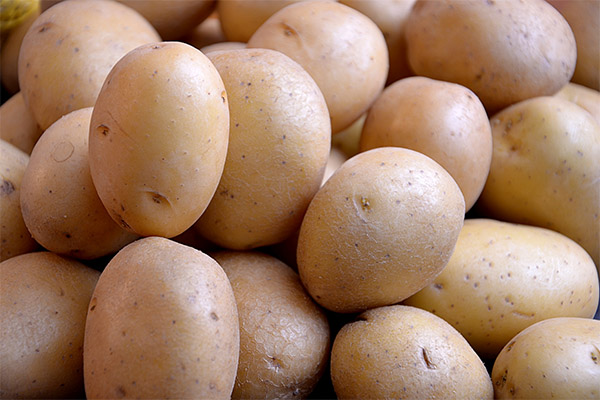
In addition, veterinarians strictly prohibit feeding potatoes to cats and dogs if:
- The animal is under the age of one year.
- The cat or dog is carrying or nursing babies.
- The pet has an individual intolerance to the product.
- The pet has been diagnosed with gastrointestinal disorders.
Potatoes are added not only to the diet of pets. It is also part of a balanced feed, which is made for cattle.
Interesting facts about potatoes
Many people know about the use and unique properties of this product, but only a few are aware of such facts:
- This root vegetable belongs to the nightshade family, which indicates its kinship with tomatoes and eggplants.
- The berries that grow on potato bushes are very poisonous.
- Wild potatoes are still found in South America.
- North America got to know this product later than the countries of Europe.
- On the territory of modern Russia the potato was not immediately accepted. It took the Russians almost 100 years to do this.
- Iodine on the peeled fruit stains it blue.
- The most expensive variety of this root vegetable costs about 500 euros.
- The potato is the first vegetable that people were able to grow in space.
Potatoes are a truly unique product. It is eaten all over the world, used for industrial purposes and added to animal feed. It is difficult to overestimate the benefits of this root vegetable for the human body. However, it is worth remembering and that each product can be not only useful, but also harmful, if you use it in excessive quantities and neglect contraindications.
«Important: All the information on the site is provided solely for introductory for educational purposes. Before applying any recommendations, you should consult a health care professional. specialist. Neither the editors nor the authors are liable for any possible harm caused by materials."

